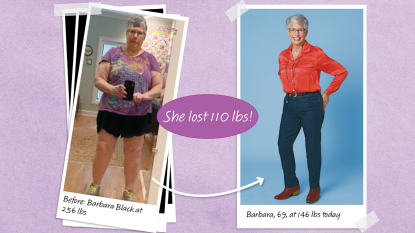The GAPS Diet Can Help Boost Brain Function, Improve Digestion, and Fight Disease
The secret's in the microbiome.

If you’re one of the many people out there doing their best to take care of their gut health, this eating plan may be just what you are looking for. The GAPS diet, a protocol developed by Dr. Natasha Campbell-McBride, promises to help revamp your microbiome for better digestion and a sharper brain.
Gut bacteria is at the forefront of many conversations about our health these days, and for good reason. Research has shown that the bacterial environment in our microbiome plays a major part in helping us fight infection and disease, keep our weight and inflammation levels in check, and even regulate our mental and emotional states.
With this in mind, Dr. Campbell-McBride developed the GAPS diet, which is an elimination diet that focuses on healing the gut to help you achieve optimal health. GAPS stands for Gut and Psychology Syndrome ($19.79, Amazon), a term coined by Dr. Campbell-McBride describing the relationship between an unhealthy gut and certain brain conditions like ADHD, autism, and brain fog. While the GAPS diet was originally developed for children, many adults are now using it to combat digestive issues, boost brain function, and improve their gut flora for better overall health. That means if you chronically suffer with things like constipation, IBS, bloating, fatigue, headaches, brain fog, skin problems like eczema or psoriasis, or autoimmune conditions (often attributed to gut issues), this protocol might be for you.
The theory behind it is that harmful chemicals and bacteria from processed foods and your environment are able to enter your bloodstream through a “leaky gut,” which can impair your brain function and wreak havoc on your health. When we remove certain foods from our diet for a period of time, the gut lining is able to heal.
The GAPS Diet Protocol
The GAPS dietary protocol consists of three phases:
- the GAPS introduction diet
- the full GAPS diet
- a reintroduction phase for coming off of the diet
The introduction phase of the diet is the most difficult part, and it can last between three weeks and one year depending on your symptoms. For the introduction phase, there are six stages. They are:
- Stage 1: Cut out grains, pasteurized dairy, starchy vegetables, and refined carbs. Drink homemade bone broth, juices from probiotic foods, and ginger tea. You should also drink mint or chamomile tea with honey between meals. Those who can tolerate dairy should also have unpasteurized, homemade yogurt or kefir.
- Stage 2: Add in raw organic egg yolks, ghee, and stews made with vegetables and meat or fish.
- Stage 3: All previous foods plus avocado, fermented vegetables, GAPS-recipe pancakes and scrambled eggs made with ghee, duck fat, or goose fat.
- Stage 4: All previous foods plus grilled and roasted meats, cold-pressed olive oil, vegetable juice, and GAPS-recipe bread.
- Stage 5: All previous foods plus cooked apple purée, raw vegetables starting with lettuce and peeled cucumber, fruit juice, and small amounts of plain fruit (no citrus).
- Stage 6: All previous foods plus more plain fruit, including citrus.
It’s recommended that you move from one stage to the next slowly as you start to tolerate each of the new food groups. You will notice that you’re tolerating food groups well when you’re having normal bowel movements. You’re also encouraged to introduce foods slowly as to not overload your digestive system.
The next phase which is called the maintenance phase introduces the full GAPS diet. You can follow this diet for as long as a. year and a half to two years, and should get the majority of your nutritions from the following food groups.
- hormone-free and grass-fed meat
- animal fats like ghee, raw butter, tallow, duck fat, lamb fat, and lard
- wild caught fish
- shellfish
- organic eggs
- fermented foods like homemade yogurt, kefir, and sauerkraut
- vegetables
- moderate amounts of nuts and GAPS-recipe baked goods
During this phase, you should avoid refined carbs, canned foods, and processed (packaged) foods. It’s also advised that you don’t eat fruit and meat together, and that you drink a cup of bone broth with every meal. You’re also encouraged to have either animal fat, coconut oil, or cold-pressed olive oil with each meal.
The final phase of the diet is the reintroduction phase, when you will start coming off the GAPS protocol. It’s advised that you start this phase once you’ve had normal bowel movements on the full GAPS diet for at least six months.
This part of the diet, much like the others, requires that you start reintroducing foods slowly. While it doesn’t specify an order as to what foods you should add back in, you’re encouraged to start our with potatoes and fermented grains, beginning with moderate amounts until you notice you’re digesting them properly.
The GAPS diet is one of the more long-term diet protocols out there, and even when you’re done with it, Dr. Campbell-McBride suggests that you continue to limit your intake of processed foods and foods that contain high amounts of sugar. As with many other diet protocols, the GAPS diet proposes that consuming whole foods with high nutrient content is the way to optimal health.
Here’s to a healthier gut and a better brain!













